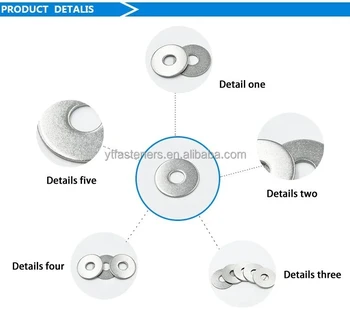Lis . 16, 2024 08:22 Back to list
m30 hex nut
Understanding the M30 Hex Nut A Key Component in Mechanical Engineering
In the world of mechanical engineering, fastening components play a crucial role in the assembly and integrity of structures and machines. Among these fasteners, hex nuts are indispensable, and the M30 hex nut is a specific type that deserves particular attention. This article delves into the specifications, applications, and significance of the M30 hex nut in various industries.
What is an M30 Hex Nut?
First and foremost, the M in M30 indicates that it is a metric size. The 30 refers to the nominal diameter, which is 30 millimeters. Hex nuts are named for their hexagonal shape, which provides a larger surface area for tools, enabling easier gripping and torque application during assembly. Made from a variety of materials such as carbon steel, stainless steel, and brass, M30 hex nuts are known for their durability and high strength-to-weight ratio.
Specifications and Dimensions
Understanding the specifications of the M30 hex nut is essential for engineers and manufacturers. The most critical dimensions of a hex nut include the width across flats, thickness, and pitch. For an M30 hex nut, the width across flats is typically around 46 millimeters, while the nut's thickness is approximately 20 millimeters, depending on the standard. The pitch, which is the distance from one thread to the next, is generally 3.5 millimeters for standard variants of the M30 hex nut. These precise dimensions ensure compatibility with M30 bolts and screws, making it easier to achieve secure fastening in mechanical assemblies.
Grade and Material Considerations
M30 hex nuts can be found in various grades that indicate their mechanical properties, such as tensile strength. Common grades for hex nuts include Grade 8, ASTM A194, and those adhering to ISO standards. For instance, using a grade with a higher tensile strength is vital when the application requires enduring heavy loads or shocks. Material choice also plays a vital role; while carbon steel provides excellent strength, stainless steel adds corrosion resistance, making it suitable for outdoor and marine applications. Understanding the specific requirements of your project is critical when selecting the right M30 hex nut.
m30 hex nut

Applications of M30 Hex Nuts
The versatility of M30 hex nuts allows them to be utilized in a wide range of applications across different industries. They are commonly used in construction, automotive, aerospace, and machinery manufacturing. In the construction industry, M30 hex nuts are often employed to secure heavy steel frames, supporting structures in bridges, and large buildings. Their robust design ensures stability and safety in critical applications.
In automotive manufacturing, M30 hex nuts play a significant role in assembling various components of a vehicle, from the engine to the chassis. In the aerospace sector, where safety and reliability are paramount, these hex nuts are used to fasten components subjected to extreme conditions and pressures.
Importance of Proper Installation
Installing M30 hex nuts correctly is vital for maintaining the safety and efficiency of mechanical assemblies. It is essential to use the appropriate toolkit to achieve an adequate torque level to avoid stripping the threads or damaging the components. Additionally, applying a thread-locking compound can enhance the nut's resistance to loosening due to vibrations or dynamic loads, which is critical in applications where safety is a priority.
Conclusion
In conclusion, the M30 hex nut embodies the essential qualities needed for efficient fastening in mechanical engineering and construction. With its unique specifications and broad range of applications, it serves as a fundamental component in various industries. Understanding its dimensions, material properties, and proper installation techniques can significantly impact the performance and longevity of mechanical assemblies. As technology and materials continue to evolve, the relevance of the M30 hex nut remains steadfast, illustrating its irreplaceable role in the world of engineering.


